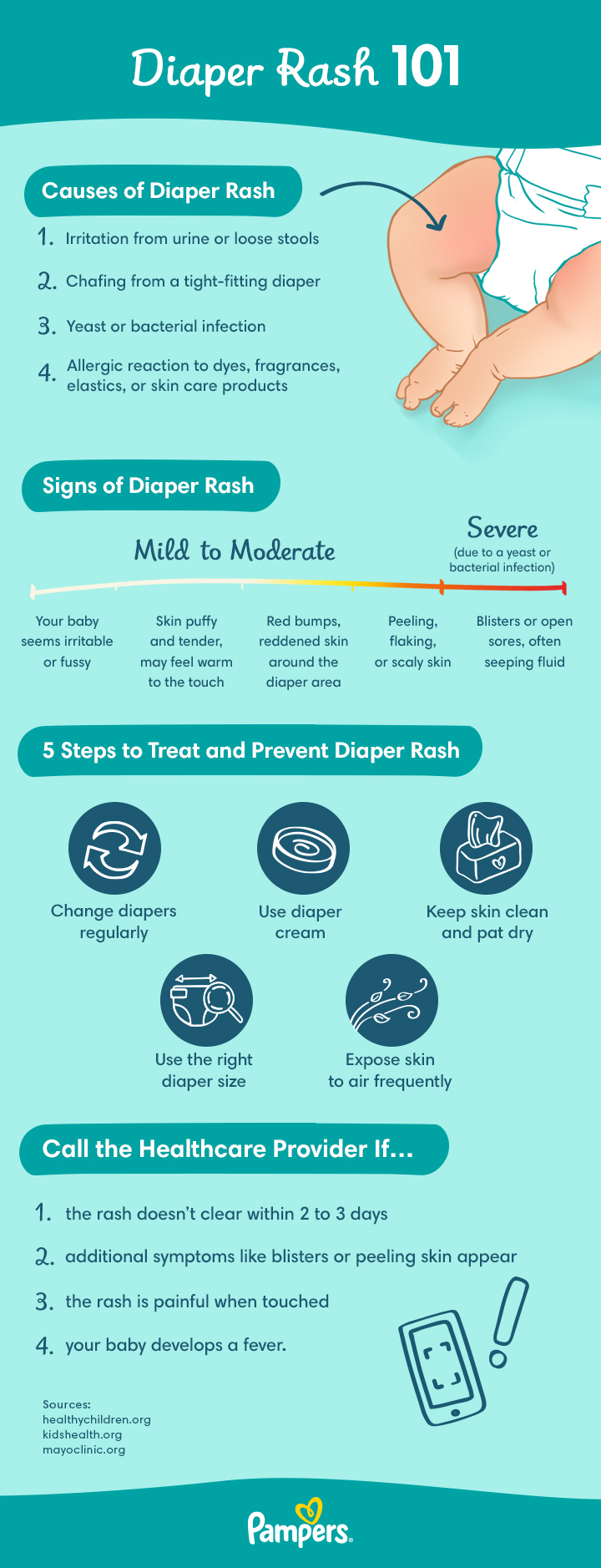
Understanding and Effectively Treating Baby Diaper Rash
Diaper rash, a common skin irritation affecting infants, can cause discomfort and distress for both the baby and the caregiver. Understanding the causes, symptoms, and effective treatment options is crucial for ensuring the baby’s well-being and preventing future occurrences.
Causes of Diaper Rash
- Frequent Wet or Soiled Diapers: Prolonged exposure to urine and feces can irritate the baby’s delicate skin, leading to diaper rash.
- Friction and Rubbing: Tight or ill-fitting diapers can rub against the baby’s skin, causing irritation and inflammation.
- Chemical Sensitivity: Some diapers or wipes may contain chemicals that irritate the baby’s skin, particularly those with fragrances or dyes.
- Bacterial or Fungal Infections: Bacteria or fungi can thrive in the warm, moist environment of a diaper, leading to diaper rash.
- Underlying Medical Conditions: In rare cases, diaper rash can be a symptom of an underlying medical condition, such as food allergies or digestive issues.
Symptoms of Diaper Rash
- Redness and Irritation: The baby’s skin in the diaper area becomes red, inflamed, and irritated.
- Bumps or Pimples: Small red or white bumps or pimples may appear on the skin.
- Scaling or Peeling: The skin may become dry, scaly, or peeling.
- Cracking or Bleeding: In severe cases, the skin may crack or bleed.
- Discomfort and Fussiness: The baby may experience discomfort, fussiness, or crying when the diaper area is touched or cleaned.
Treatment Options for Diaper Rash
1. Diaper Hygiene:
- Change Diapers Frequently: Change diapers as soon as they become wet or soiled to minimize exposure to irritants.
- Use Gentle Diapers and Wipes: Choose diapers and wipes that are fragrance-free, dye-free, and hypoallergenic to reduce the risk of irritation.
- Cleanse Gently: Use warm water and a soft washcloth to gently cleanse the diaper area. Avoid using harsh soaps or wipes.
- Pat Dry: Pat the diaper area dry with a soft towel. Avoid rubbing, as this can further irritate the skin.
2. Topical Treatments:
- Diaper Rash Creams: Over-the-counter diaper rash creams containing zinc oxide or petroleum jelly can help protect the skin from moisture and reduce inflammation.
- Antibacterial or Antifungal Creams: If the diaper rash is caused by a bacterial or fungal infection, the doctor may prescribe an antibacterial or antifungal cream.
- Sitz Baths: Sitz baths, where the baby sits in a warm bath of water, can help soothe and clean the diaper area.
3. Home Remedies:
- Breast Milk: Breast milk has antibacterial and anti-inflammatory properties that can help soothe diaper rash. Apply a few drops of breast milk to the affected area.
- Coconut Oil: Coconut oil is a natural moisturizer that can help protect the skin and reduce inflammation. Apply a small amount of coconut oil to the diaper area.
- Baking Soda: Baking soda can help neutralize the pH of the skin and reduce irritation. Add a few tablespoons of baking soda to the baby’s bathwater.
4. Other Measures:
- Air Exposure: Allow the baby to spend some time without a diaper to air out the diaper area.
- Loose-Fitting Diapers: Use loose-fitting diapers to minimize friction and rubbing.
- Diaper Liners: Diaper liners can help absorb moisture and protect the baby’s skin from direct contact with urine and feces.
- Dietary Changes: If the diaper rash is suspected to be caused by a food allergy or digestive issue, consult with a healthcare professional about dietary changes.
Prevention of Diaper Rash
- Frequent Diaper Changes: Change diapers frequently to keep the diaper area clean and dry.
- Proper Diaper Fit: Ensure diapers fit snugly but not too tightly to prevent friction and rubbing.
- Gentle Diaper Wipes: Use gentle, fragrance-free, and dye-free diaper wipes to avoid irritation.
- Moisturizing: Apply a thin layer of diaper rash cream or petroleum jelly to the diaper area after each diaper change to protect the skin.
- Air Exposure: Allow the baby to spend some time without a diaper to air out the diaper area.
When to Seek Medical Attention
Most diaper rashes can be treated at home with proper care. However, it is important to seek medical attention if:
- The diaper rash does not improve with home treatment within a few days.
- The diaper rash is severe, with extensive redness, swelling, or bleeding.
- The baby has a fever or other signs of infection.
- The baby is fussy or irritable and does not respond to diaper changes.
Conclusion
Diaper rash is a common skin irritation that can cause discomfort for infants. Understanding the causes, symptoms, and effective treatment options is essential for ensuring the baby’s well-being and preventing future occurrences. By following the recommended guidelines, caregivers can effectively manage diaper rash and promote the baby’s skin health. If the diaper rash persists or worsens, it is important to seek medical attention to rule out any underlying medical conditions and receive appropriate treatment.
